-
Preparation
40 minutes
-
Cooking
30 minutes
-
Difficulty
Medium
Ingredients for Savory Pía Cake For 5 pieces
All-purpose flour 190 gr Cornstarch 10 gr Tapioca starch 43 gr Custard powder 1 tablespoon (or milk powder) Peeled mung beans 100 gr Durian 200 gr (flesh without seeds) Pumpkin 20 gr Dried shrimp 20 gr Salted egg yolks 5 pieces (steamed) White sesame seeds 10 gr Black sesame seeds a little Cashews 10 gr Melon seeds 10 gr (shelled) Chopped shallots 1 teaspoon Lard 85 ml Sugar lard 20 gr Egg yolk 1 piece Cooking oil 2 tablespoons Sesame oil 1 teaspoon Sugar 50 gr Salt a little
How to choose good ingredients
How to choose good green beans
- To make the filling for mooncakes, you should choose green beans that have been hulled.
- You should select beans that are bright yellow, round, plump, and shiny, with no flat or worm-eaten seeds.
- Good green beans will have a natural aroma when held close to your nose. These are beans that have been planted and harvested at the right time, which will be fluffy and fragrant when processed.
- You should avoid buying beans that have a musty smell, are moldy, have skins that have changed color, or are smaller than the others, as these may be spoiled or immature beans.
How to choose ripe and delicious durian
- To get ripe durian, choose fruits with an outer layer that is moss green or slightly yellowish green; the spikes should be firm, round, and evenly spaced. The belly of the fruit should be swollen and clearly show the segments.
- A ripe durian will emit a strong aroma; you can smell the distinctive scent of durian without having to bring it close to your nose.
- When buying durian, you should hold the fruit and gently tap the body with a stick. If the durian is ripe and has a lot of flesh, it will make a “thud” sound. Conversely, if it sounds “ping ping,” it may have large seeds and little flesh.
- You should avoid buying durians with a faint smell, a skin that is yellowish cream, or a stem that does not ooze sap when pressed, as these may have been soaked in chemicals.
Where to buy delicious dried shrimp?
- Dried shrimp are quite commonly sold; you can easily find them at traditional markets, grocery stores, supermarkets, as well as on reputable e-commerce sites, with prices ranging from 60,000 – 130,000 VND per 100 grams (price updated in December 2021).
- Additionally, you can make dried shrimp at home following detailed instructions from TasteVN.
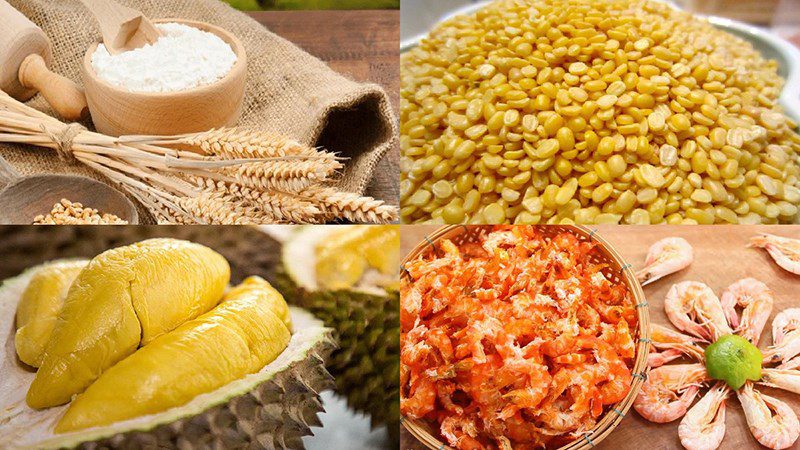
Required tools
Oven, non-stick pan, pot, hand-held blender, meat grinder, parchment paper,…
How to make salty Pia cake
-
Making mung bean and durian filling
First, rinse the mung beans and soak them in water for 3 – 4 hours, then drain.
Peel the pumpkin and cut it into small pieces about the thickness of a finger.
Next, put 100g of mung beans in a pot with 300ml of boiling water, add 20g of prepared pumpkin and 1/2 teaspoon of salt, place the pot on the stove, adjust to medium heat, and cook until the water is completely gone and the mung beans and pumpkin are soft.
After that, you use a hand blender or mash the mixture of mung beans and pumpkin until smooth, then strain through a sieve for a fine texture.
Next, place a non-stick pan on the stove, add the mung bean and pumpkin mixture, and stir on low heat. Mix 10g of cornstarch with 20ml of water, divide it into 3 small portions, and every 5 minutes, add one portion of the cornstarch mixture into the mung bean pan.
Make sure to stir continuously to prevent the mixture from burning. Continue to cook on low heat until the mixture in the pan becomes a cohesive, smooth mass, then turn off the heat and transfer it to a bowl.
Next, add 200g of durian flesh, 20g of sugar, and 1 tablespoon of custard powder (or milk powder) into the pan, turn the heat to low, and stir until the sugar dissolves and the durian turns slightly translucent, then turn off the heat.
Add 1/2 of the sautéed durian into the bowl of mung bean mixture and use a spoon to mix well to create the mung bean and durian filling. Set the remaining part aside.
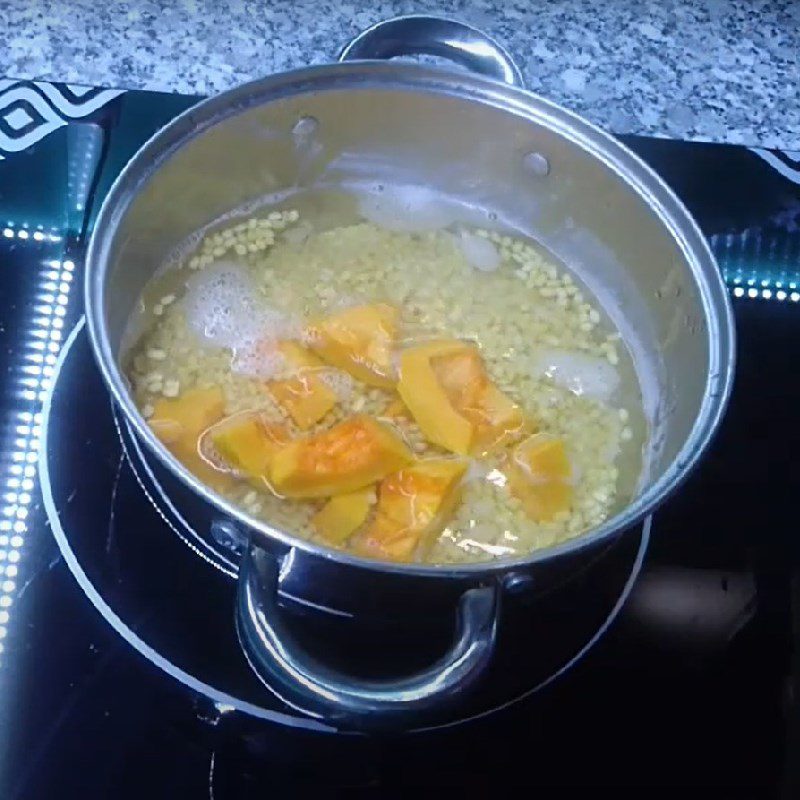
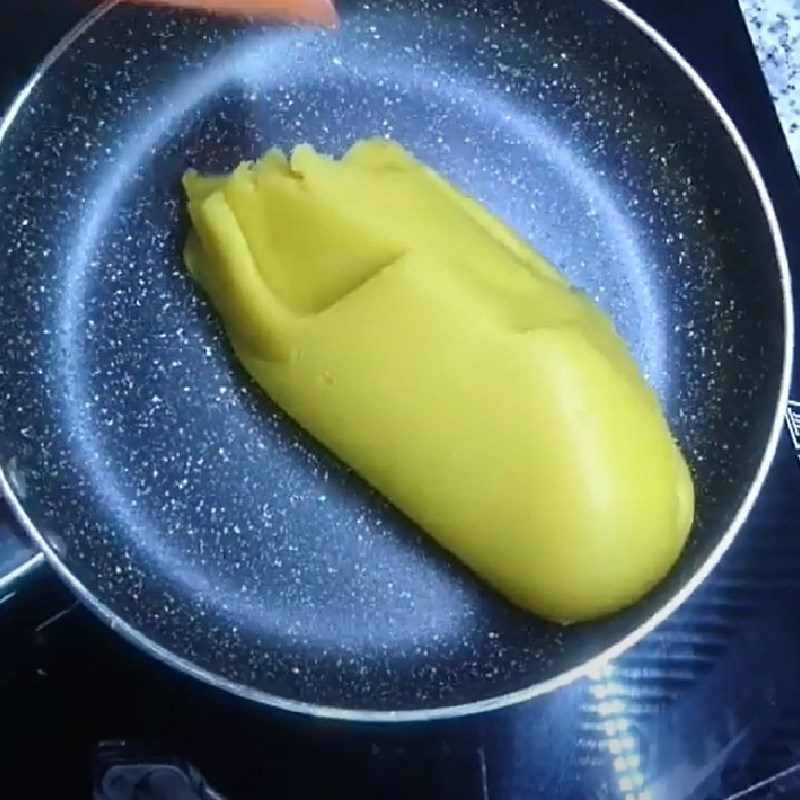
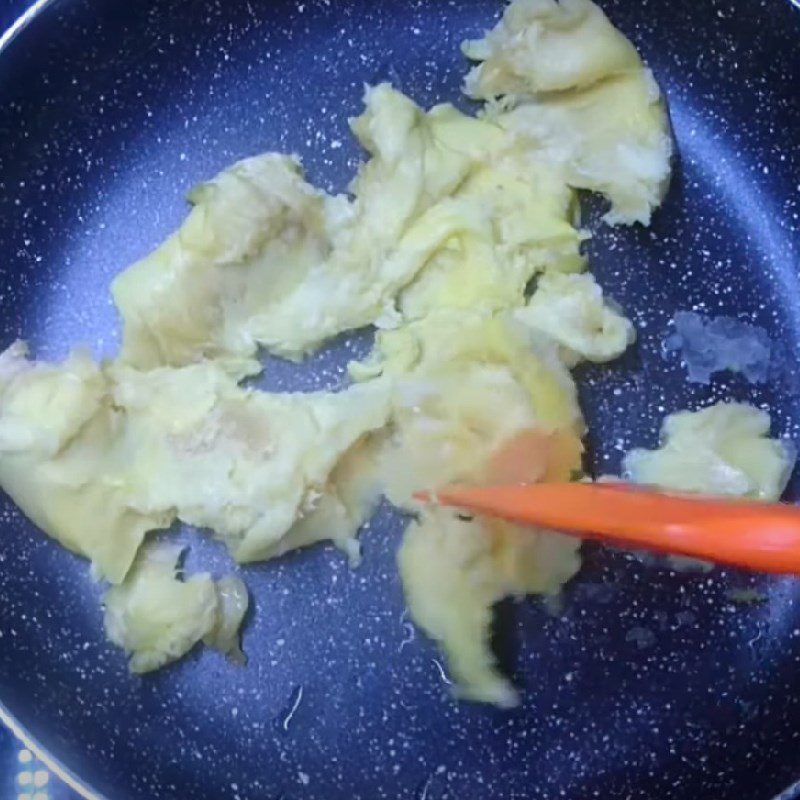
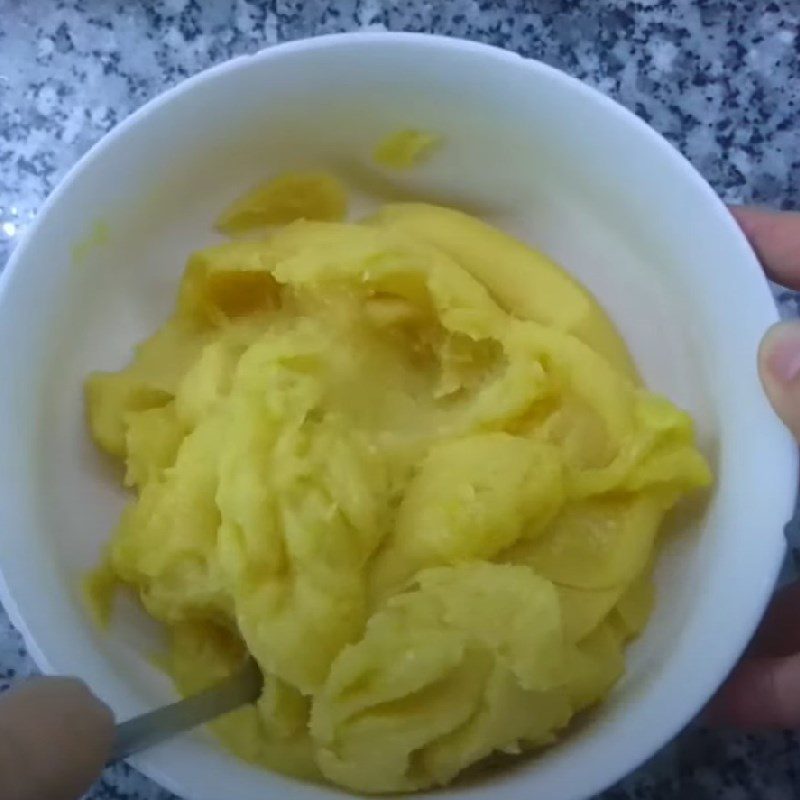
-
Stir-frying shrimp filling
Place another clean pan on the stove, turn on high heat to heat the pan, add 10g of shelled watermelon seeds and roast on low heat for about 5 minutes, then transfer to a separate bowl, and continue to roast white sesame in the same way.
For 20g of dried shrimp, soak it in 50ml of water for about 15 – 20 minutes until soft, then remove and drain.
Next, place the pan on the stove, add 2 tablespoons of cooking oil, 1 teaspoon of minced shallots and fry until golden and fragrant, then add the soaked dried shrimp and 10g of sugar, stir-frying until the sugar dissolves and caramelizes, then turn off the heat.
Then, add the stir-fried dried shrimp, 10g of cashew nuts, and 20g of lard into a meat grinder and grind until the mixture is crushed and smooth.
Put the ground shrimp mixture back into the pan, adjust to low heat, dissolve 3g of tapioca flour with 10ml of water, then add it to the pan, using chopsticks to stir continuously until the tapioca water is evenly absorbed into the ground shrimp, then turn off the heat.
Finally, add the roasted sesame and roasted watermelon seeds and mix well so that the ingredients blend together.
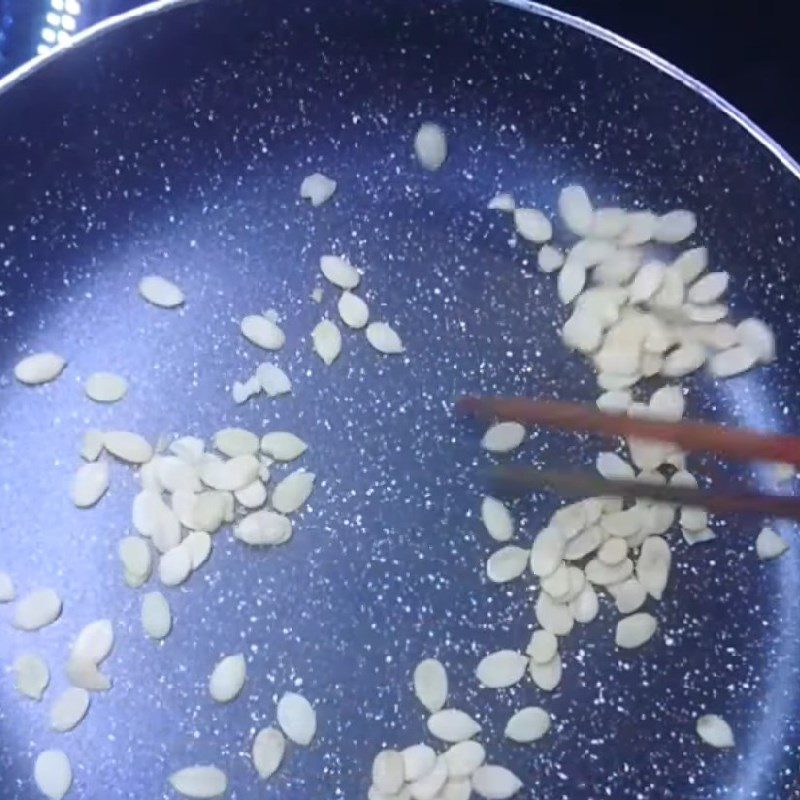
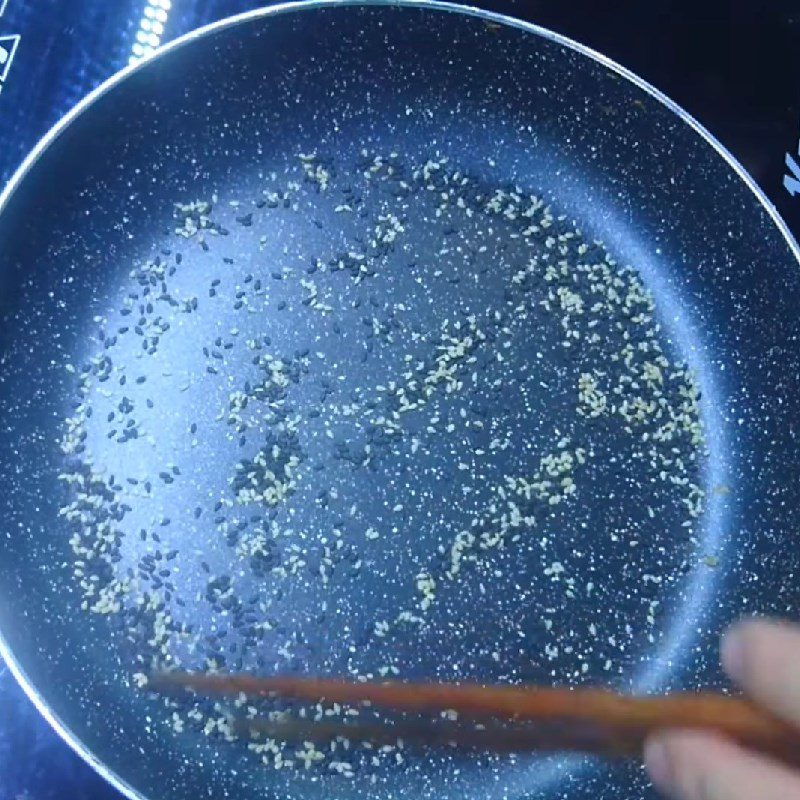
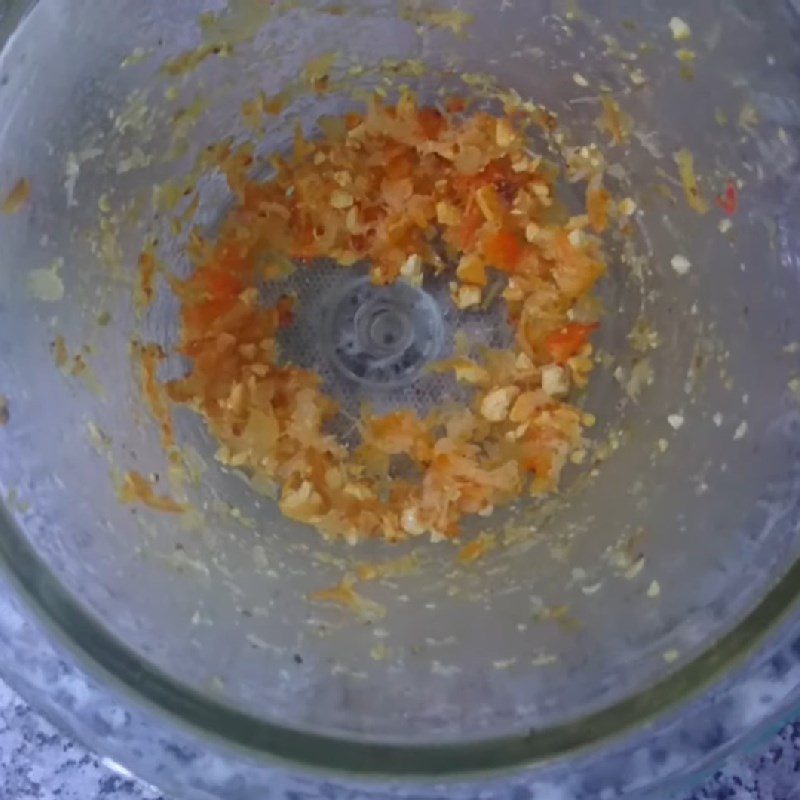
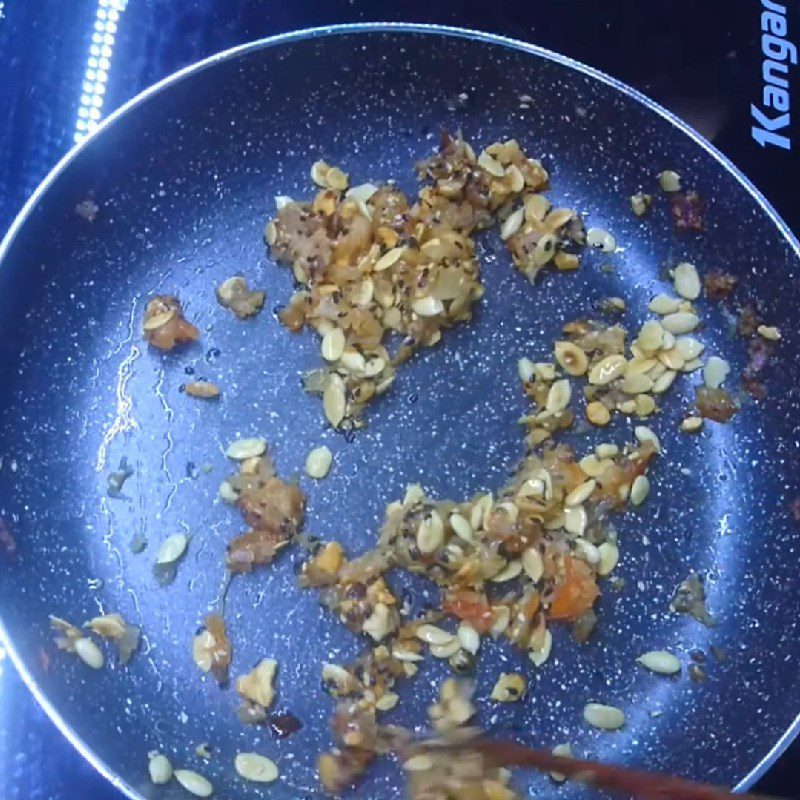
-
Making the filling
To make one filling, take about 2 tablespoons of pre-prepared green bean filling and roll it into a round ball, using your thumb to press into the filling to create a hole in the center of the ball.
Next, add 1 teaspoon of cooked durian, 1 teaspoon of shrimp filling, and 1 salted egg yolk into the hole, pinching the top closed and rolling it into a round ball.
Do the same with the remaining 4 fillings. After completing all the filling balls, place them in the refrigerator for 30 minutes.
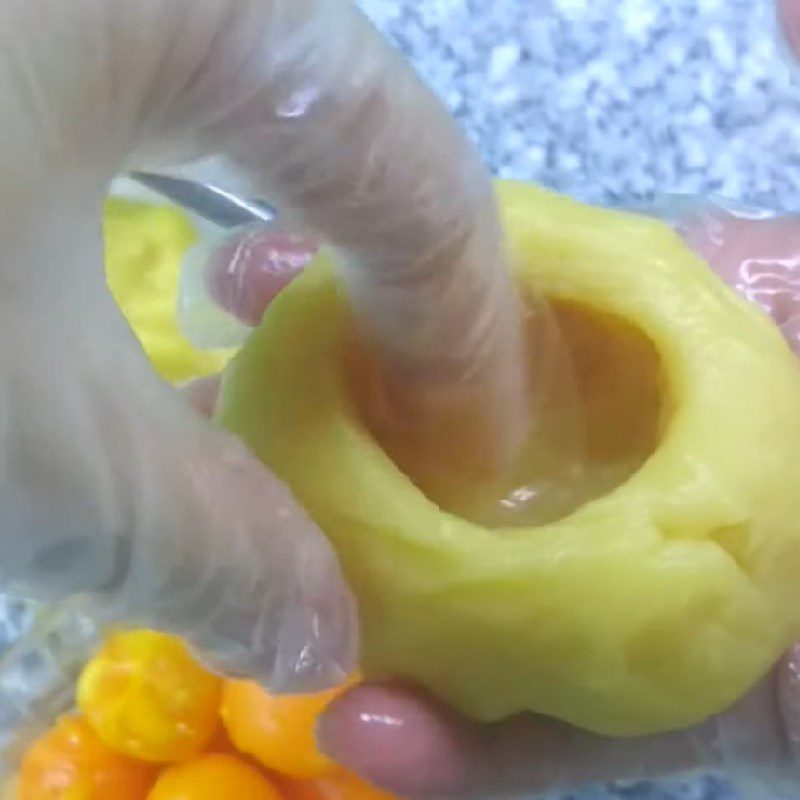
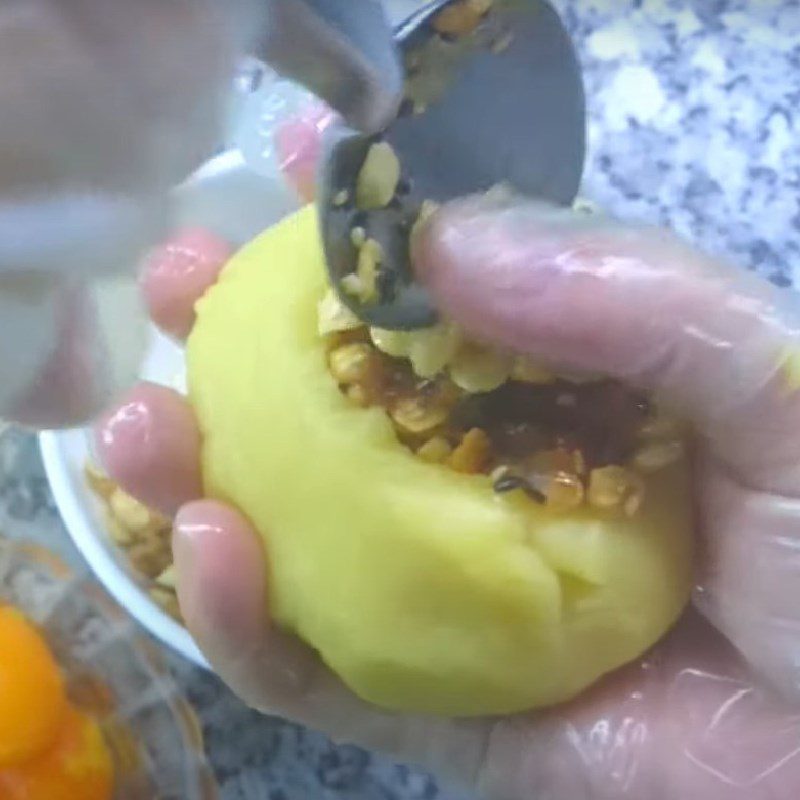
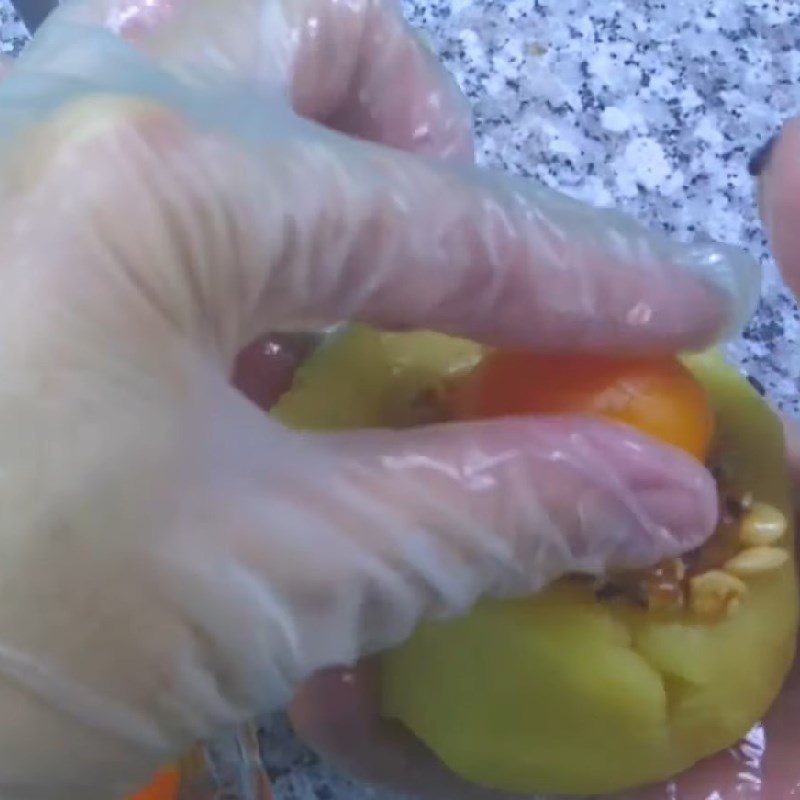

-
Mixing the dough
To make the dough for the crust, first, add 60ml of water, 20gr of sugar into a bowl, stir until the sugar dissolves, then add 50ml of lard (or cooking oil) and mix well until combined.
Next, add 150gr of all-purpose flour into another bowl, pour the water-sugar-lard mixture in, and mix until the dough forms a sticky, cohesive mass, then let the dough rest for 20 minutes.
Continue making the oil dough by adding 40gr of all-purpose flour and 40gr of tapioca starch into a bowl, mix well. Add 35ml of lard (or cooking oil) and continue mixing until the dough becomes a uniform mass that does not stick to your hands, then let the dough rest for 20 minutes.
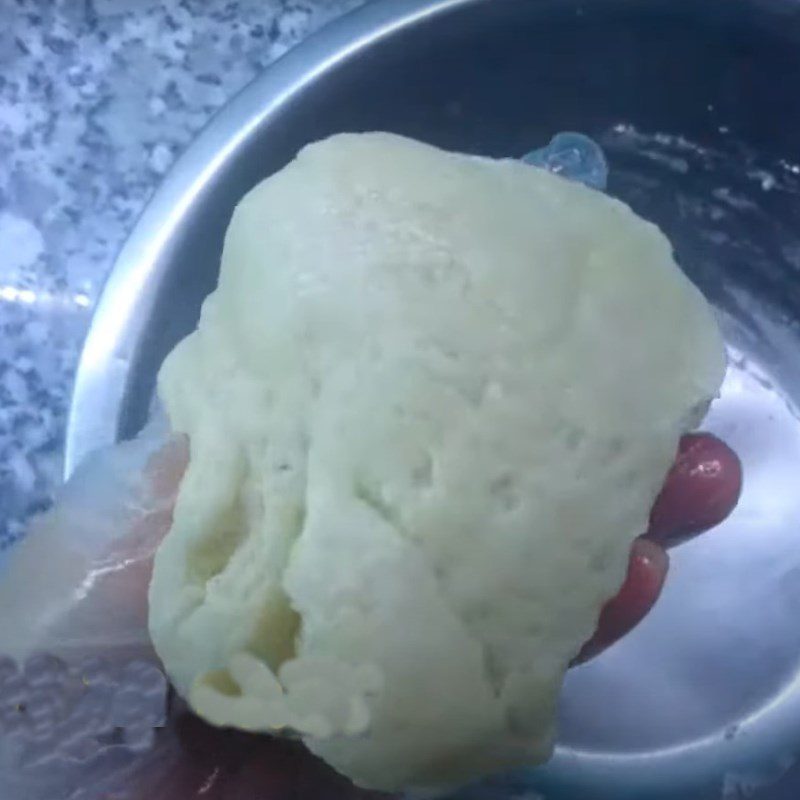
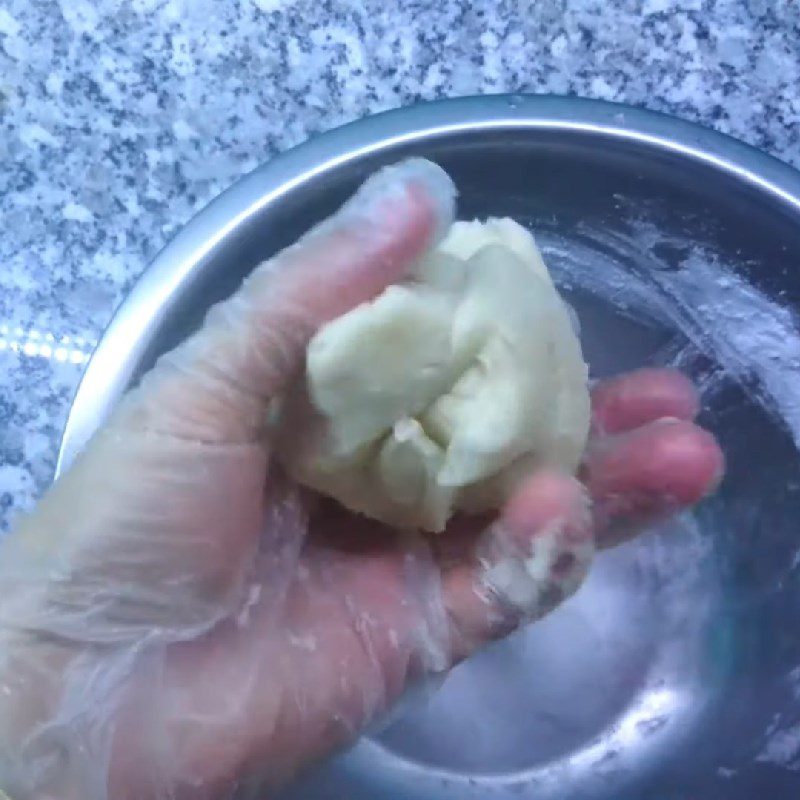
-
Rolling the dough and wrapping the filling
Divide each piece of crust dough and oil dough into 5 small dough balls. Flatten the crust dough ball into a flat piece, place the oil dough ball inside, and then gather it up. Do the same with the remaining dough balls.
Next, place the dough ball on a flat surface so that the bottom of the dough is facing down, and use a rolling pin to flatten it.
Then, roll the flattened dough back up, and continue to roll it out again, then roll it back up; repeating the rolling and rolling process multiple times is to create a multi-layered crust.
Next, place the rolled dough on the flat surface, use the rolling pin to flatten the dough into a flat piece with the outer edges thinner than the middle part. Place the filling ball in the center of the dough piece, gather and fold the edges of the dough to completely wrap the filling, then place it on a piece of parchment paper.
Do the same with the remaining dough portions!
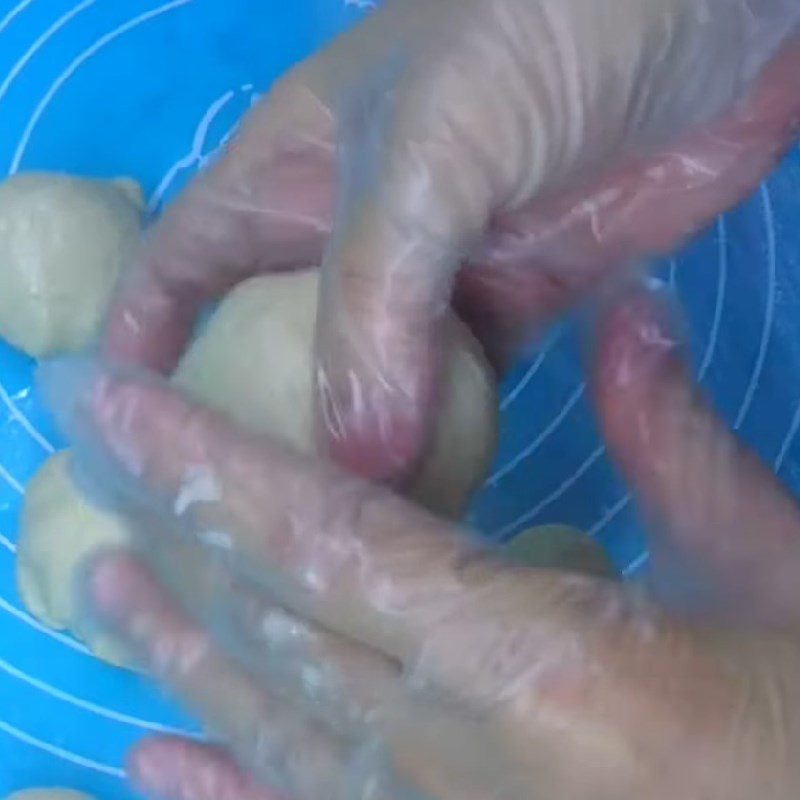
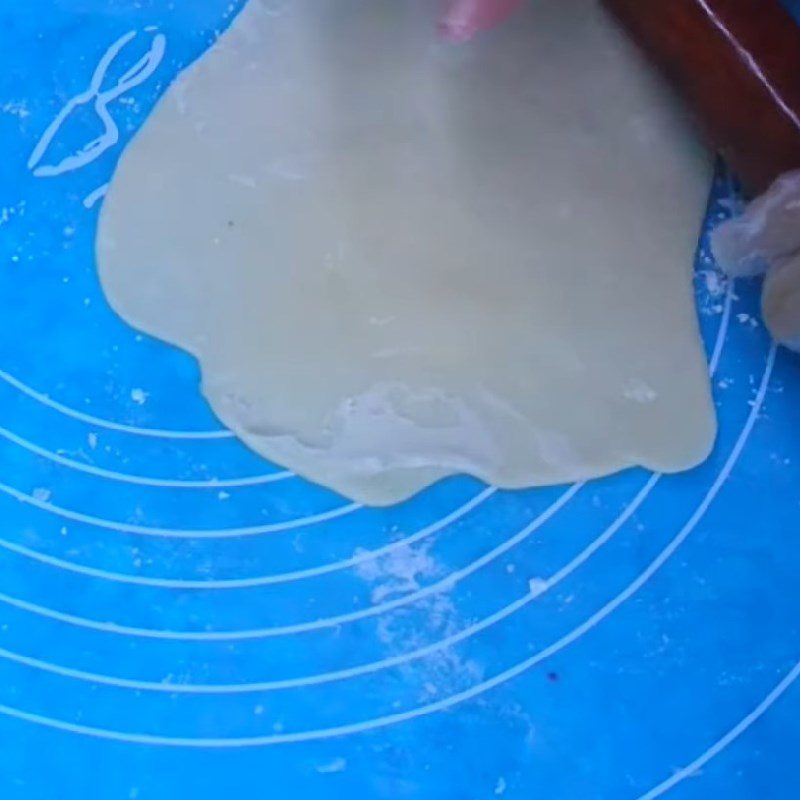
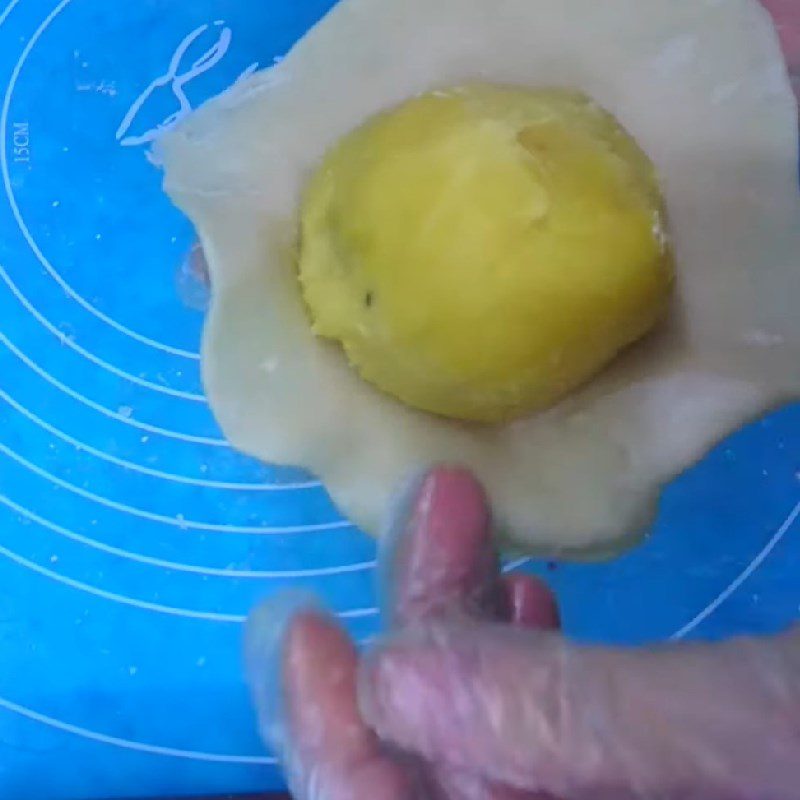
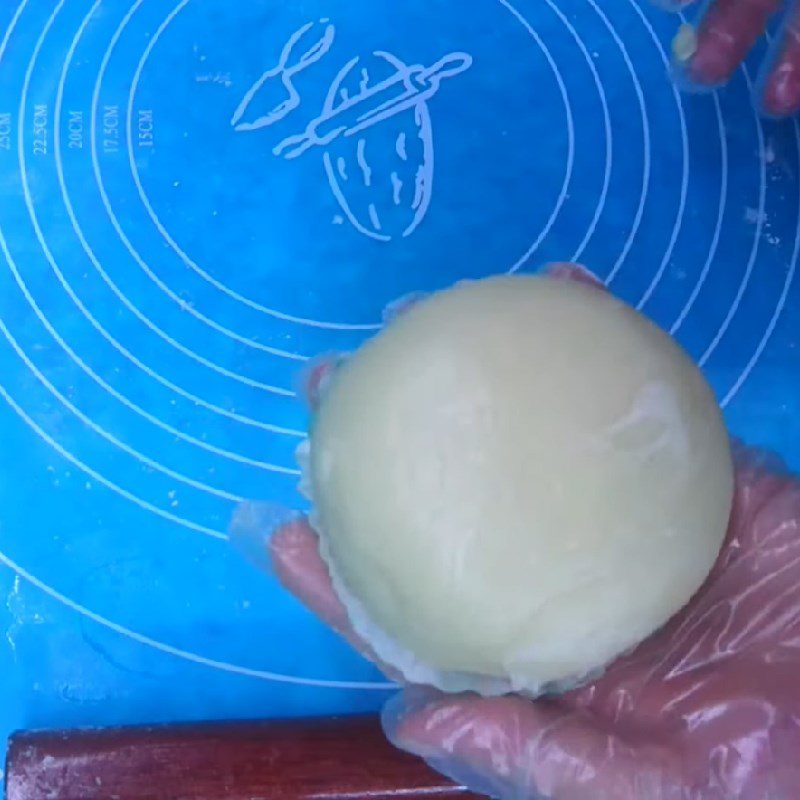
-
Baking the cake
Preheat the oven to 160 degrees Celsius for 10 – 15 minutes, then place the cakes on a tray and put them in the oven for the first baking at 160 degrees Celsius for 20 minutes.
After 20 minutes, take the cakes out, spray a little water on the cakes, then wait for the cakes to absorb the moisture.
At this point, take 1 egg yolk into a bowl, add 1 teaspoon of sesame oil, and whisk it. Use a brush to apply a thin layer of the beaten egg mixture onto the surfaces of the cakes and sprinkle a little black sesame on top.
Put the cakes back in the oven and bake for the second time at 160 degrees Celsius for another 10 minutes to finish.
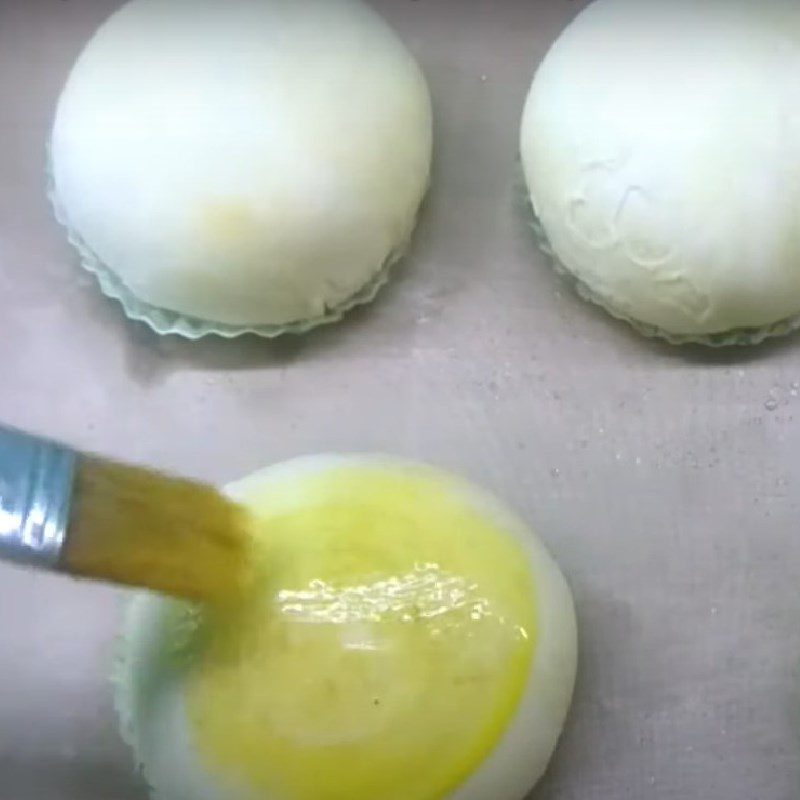
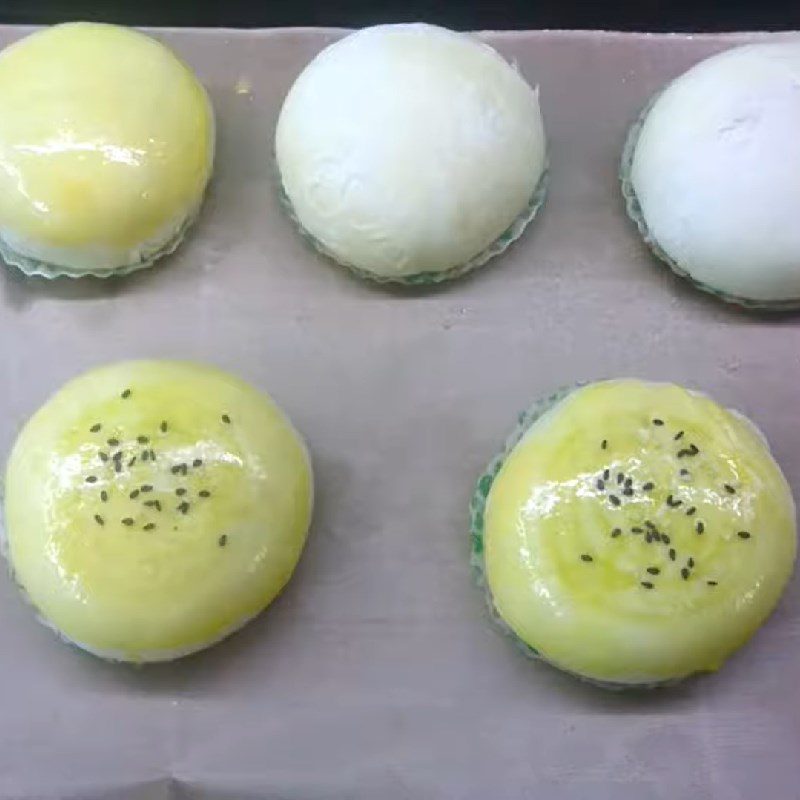
-
Final Product
So we have finally completed the delicious salty pia cake, freshly baked with a golden crispy crust and an incredibly appealing aroma. However, to make it softer and more delicious, you should let the cake sit for a day to allow the crust to become oily!
The pia cake is soft, with a chewy layer that is just right, and a filling that is rich and creamy with a mix of sweet and salty flavors that makes it really appetizing. This cake is perfect for a busy breakfast or as a snack in the afternoon!

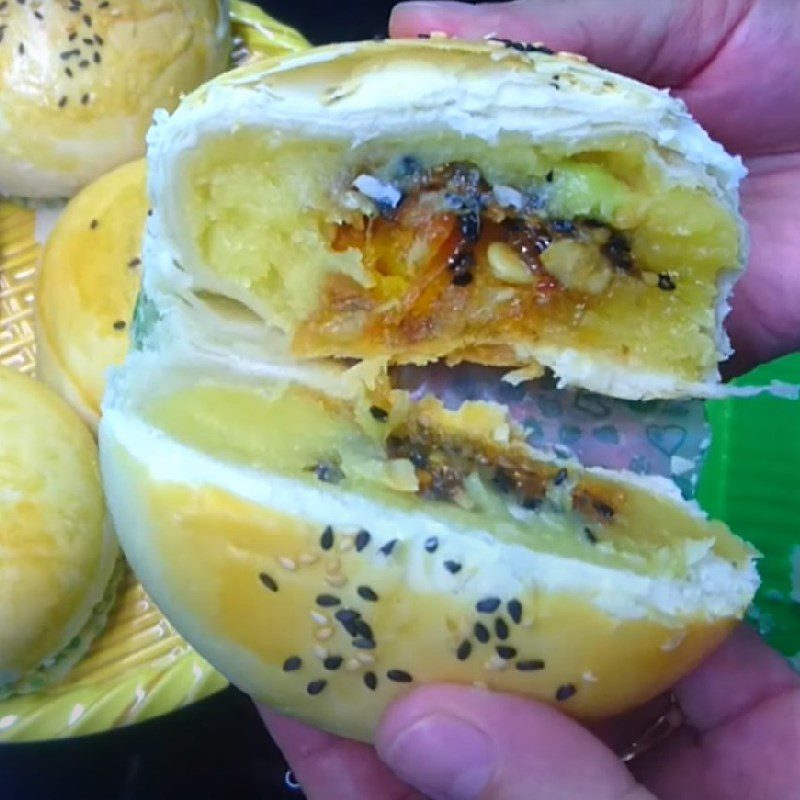
So TasteVN has completed the detailed guide on how to make salty pia cake. Save this recipe for this “familiar yet strange” cake so you can show off your cooking skills for the family to enjoy someday! Wish you success!



